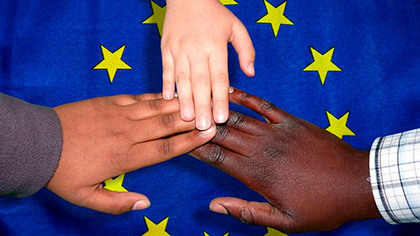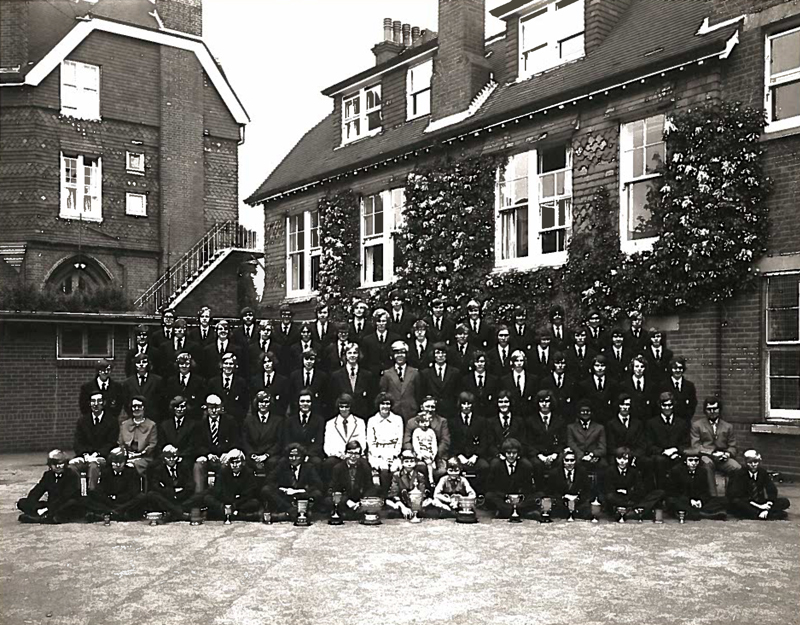Asset Publisher

A marriage of head and heart
Strasbourg and Europe - 1989-1997
Catherine TRAUTMANN

In 2019, we are celebrating not just the 70th anniversary of the Council of Europe but also Strasbourg’s historic role as the capital of Europe. In this connection, it seems to me that if we look back to the end of another decade, focusing on a year which was particularly symbolic for Strasbourg and Europe, this will help us to understand how far we have come and what were the underlying ambitions of the project we are working on every day.
The year was 1989: the Council of Europe was celebrating its 40th anniversary and I had just been elected Mayor of Strasbourg. It was a marvellous year in so many respects: a pivotal point in the European construction process, marking the reconciliation between eastern and western Europe – the year in which the European anthem was sung on and around the Berlin Wall, and the wall came down with a crash – but no violence – and hence the year in which a large number of countries began turning to the Council of Europe, causing it to undergo an unprecedented enlargement (from 23 to 40 member states in a little under seven years!). It was the year of an incredible switch to democratic transition and, ultimately, revolution – a time to think seriously about the political response to this new situation and about what needed to be done for it to succeed. It was the year of the European Council Summit in Strasbourg, where the Community Charter of Fundamental Social Rights of Workers was adopted. It was also the year in which Catherine Lalumière was elected Secretary General of the Council of Europe, in May.
The fact that a woman was placed at the helm of an institution which advocates respect for human rights was a crucial step forward. Two months later, on 6 July, Catherine Lalumière welcomed the Secretary General of the Communist Party of the Soviet Union, Mikhail Gorbachev, to the Council of Europe, where he outlined his vision of a continent united within a “Common European Home”. Lastly, it was the year in which, for the first time in France, the citizens of a city of more than 100 000 inhabitants – Strasbourg – chose to elect a woman mayor. Starting my political career with this symbolic feminist but, above all, humanist victory only strengthened my desire to be involved in the fight for respect for human rights. And I was in the right place to fight this fight.
After the fall of the Berlin Wall, Strasbourg became once again what it had been throughout its long history, and what it still is today: a city of central Europe. With the historic turning point of the end of the Cold War we were able to banish the false impression, every time we travelled to central or eastern Europe, that we were detached or that we belonged to another world: it put Strasbourg back at the centre of Europe, equidistant from Paris and Prague – a geographical position which is strategically crucial to its role as a European capital.
Strasbourg – a lesson in Europe
1989 therefore was the year in which we reconnected with the grass roots, a year of new democratic challenges for Europe. And all of this provided us with the opportunity, through the rule of law and the Council of Europe, to build a body of common reference points. When I met the mayors of these so-called eastern European countries which were changing course one after another, I was fascinated by their thirst for knowledge and eagerness to establish contacts. This was the case with many other leading figures, for whom Strasbourg was an essential reference point due to its status as the capital of democracy in Europe. I particularly remember Jorge Sampaio, whose first official visit as President of Portugal was to Strasbourg, saying: “I’m coming back to where I first learnt what Europe was really about”.
For the fact is that the Council of Europe and hence Strasbourg, for all those who pass through it, is the place where you learn what the original meaning of Europe is: democracy, human rights and the rule of law. Over and above their symbolic meaning, the Portuguese President’s words highlight an essential aspect of democracy: the fact that it is a constant learning process, and that it will never be fully completed: the fact that, as with the whole of Europe, it must be relentlessly reshaped. Democracy and Europe need to be worked on, they need time and effort, and the Council of Europe has always been a testing ground for these processes. Europe is something to be fashioned, but it is also something to be debated, and Strasbourg has always been a city of debates. Today, we see this need even more than ever.
The end of the 1980s was an extraordinary time of geopolitical upheaval, which put an end to the international order inherited from Yalta. I felt it was extremely important to recognise that reconciliation was taking place and that for those eastern European countries which were freeing themselves from Soviet domination, the true big issue was European integration. This made the Council of Europe a starting point and a finishing point, a place of discovery, of learning about parliamentary democracy. This was also a time that was eminently conducive to co-operation, as everything had to be re-invented: laws needed to be amended, the independence of local and regional authorities needed to be secured, the constitutions of all the countries which wished to join the extended European family had to be drawn up – the list goes on. But the most important thing was not only to assist countries which were turning towards democracy, it was to make democracy tangible, perceptible and valuable to the people. Here again, the aim was to make the European ideal something concrete, to ensure that it took concrete form in their societies.
How could this be achieved? European Union membership was an important and desirable aim, but one which could only be achieved in the long term. Incorporating these countries, as a first step, into the Council of Europe meant helping them to equip themselves with national laws that respected human rights. The aim was also to be able to establish co-operation in fields such as education, culture, youth, and the organisation of local democracy. All this was made possible thanks to a proactive accession policy based on the European Convention on Human Rights, the Social Charter and the European Cultural Convention, three instruments which still provide the foundations for democracy.
If you wish to continue your reading, you may buy the book "Europe: a human enterprise".
Catherine TRAUTMANN
Catherine Trautmann graduated in protestant theology and entered politics in 1983, when she was elected municipal councillor for the city of Strasbourg. As a member of parliament for the Socialist Party in the Bas-Rhin from 1986 to 1988, she was a member of the French delegation to the Council of Europe. She was elected Mayor of Strasbourg in 1989 and re-elected in 1995. First elected as member of the European Parliament in 1989, she was re-elected in 1994 but resigned in 1997 to serve in Lionel Jospin’s government as Minister of Culture and Communication. She held this position until March 2000, combining the role with that of spokesperson for several months. In 2004 Catherine Trautmann once again became a member of the European Parliament, and was re-elected for a further term in 2009, which ended in July 2014. She has been President of Eurimages, the Council of Europe’s film co-production fund, since 2016.




